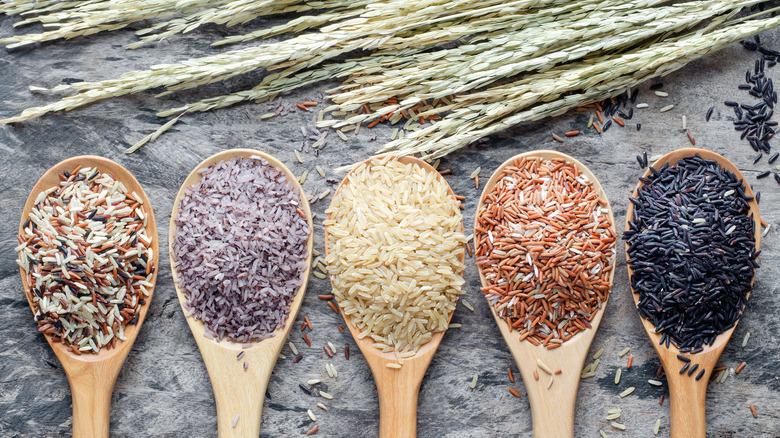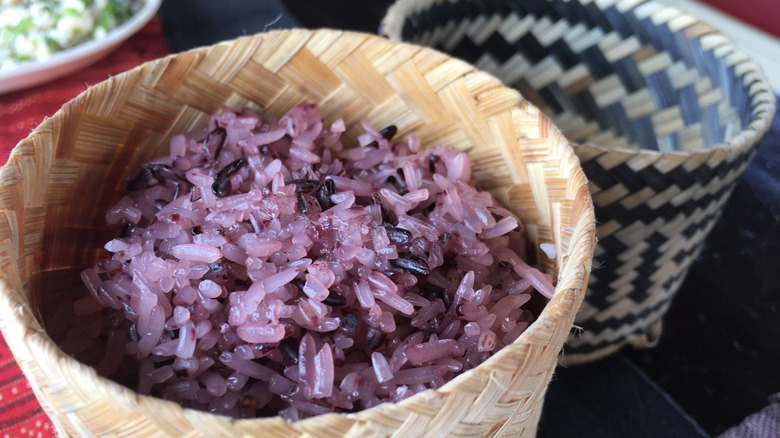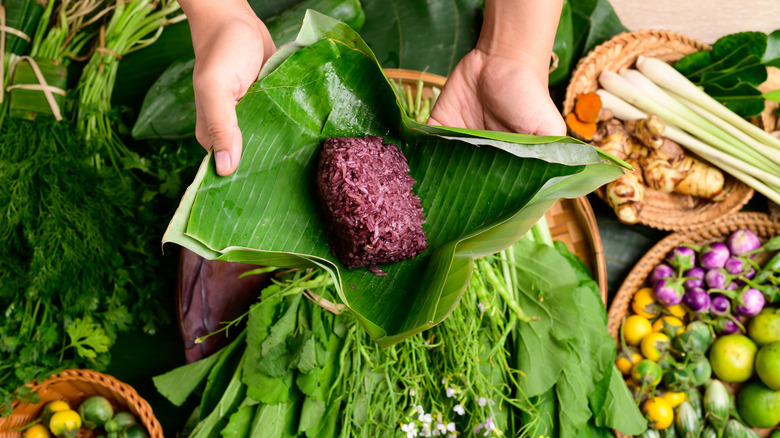How Is Purple Rice Made And Why Is It That Color?
Among the many types of rice, purple rice can be a couple of different things. It can be another name for the inky grain known as black rice, popular throughout Asia, which exists in dozens of varieties. Black rice can be both long or short-grained, nutty, sticky or not sticky. The Chinese variety of black rice which came to be known as 'forbidden,' was regarded as beneficial to health and served only to royalty. Thus, "forbidden" from the commoners.
While not harvested for high yields, black rice is a nutritional powerhouse and whole grain because its bran is not removed. Even milled, however, it is said to be higher in nutrition than white rice. Delivering a dose of the antioxidant anthocyanin, it is also pigmented by the compound, the same one which colors blackberries and eggplant. With a reputation as anti-inflammatory, antioxidant, and anti-aging, it is something of a superfood.
Purple rice can also refer to the dish known as heukmi bap (literally "black rice") in Korean and served during HMoob New Year celebrations: purple sticky rice.
Sweet and sticky
But it's not just black rice that makes the Korean and HMoob purple sticky rice dishes. This recipe calls for black rice to be mixed with glutinous, sweet, or sticky white rice. Sticky white is subtly different from sushi rice, with a much higher starch content, so be sure to pick out the correct type. In purple sticky rice, the color from the black grains dyes the white rice, resulting in a pretty lilac presentation that is richer in nutrients.
To make purple sticky rice, you will need to choose the right variety of black rice. Chinese forbidden rice is often suggested for salads or even prepared as congee, while the type called Japonica is a mix of black and mahogany, or red, rice. To make purple sticky rice, you would choose a black variety called glutinous. It doesn't contain any gluten; all rice is gluten-free. It is high in starch, however, and is often called sweet or sticky rice, like glutinous varieties of white rice. Each type of black rice takes a while to prepare, but Chinese and Japonica can take up to an hour to cook. Glutinous black rice is instead soaked for many hours and then steamed.
Easy preparation
To prepare purple sticky rice, use just three ingredients: combine a cup of sticky white rice with ¼ cup of sticky black glutinous rice in a bowl of water. Let the mixed rice soak for four to five hours, up to overnight, so that the black rice can start to tint the white grains. Some recipes call for as little as 1½ tablespoons of black rice.
Playing with ratios creates varied shades of purple, but many recipes advise using more white than black rice for the mix. Soaking is important. Skipping this step could result in the rice grains which are mushy on the outside but raw on the inside. After the soak, rinse the rice several times until the water runs mostly clear, then steam or simmer it all for 20-25 minutes.
The result is rice with a purple hue and a slightly nutty flavor. Eat it with any of your favorite Korean side dishes (called banchan) like kimchi or namul.


